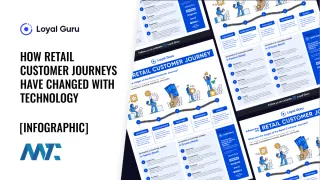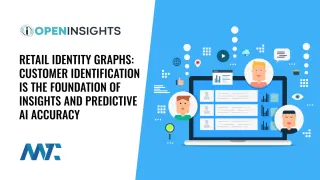How the Internet Revolutionized Offline Retail

The Internet has completely transformed consumer behavior and reshaped how physical stores operate. While early fears suggested e-commerce would destroy traditional retail, the opposite has happened—digital technologies have enabled brick-and-mortar businesses to evolve, compete, and thrive in a connected world. The rise of search engines, review platforms, and mobile technology has created a digital-first path to purchase, where most offline shopping decisions begin online.
The Importance of Getting the Basics Right
The customer journey often starts with an online search, even for in-person purchases. Half of all consumers who conduct a local search visit a store within a day, and 40% of those visits lead to a purchase. This highlights the importance of local visibility for brick-and-mortar businesses.
Accuracy and consistency in online business listings are essential. Over 90% of consumers say they’ve been frustrated by incorrect information about a local business—such as the wrong address, hours, or phone number. Inconsistent listings don’t just create confusion; they erode trust and cost sales. More than half of small businesses admit their information is not consistent across platforms, and a quarter have no idea where they are listed online.
When every touchpoint—from search results to store signage—presents a consistent and accurate message, customers gain confidence in a brand’s credibility.
Transparency is the new brand value for businesses in the information age.
Lisa Sicard, Marketing Strategist
Establishing an Online Presence
Creating a solid online presence starts with owning and verifying your business listings across key platforms. This is your foundation for being found in local search results and map listings.
To get started, you’ll need four essential components: a verified business name, a physical address, a phone number, and your business’s operating hours. These details form what’s known as your NAP data (name, address, and phone number), which must be consistent everywhere online.
Free listing services are an excellent first step. Among the most valuable are Google Local, Yahoo Local, Yelp, and Bing Places. These platforms feed data to many other directories and navigation systems, amplifying your visibility with minimal effort.
Utilizing Social Media Platforms
Social media has become a powerful tool for connecting with customers and extending local brand visibility. For retail businesses, it’s more than just a marketing channel—it’s a direct communication bridge with the community.
Facebook Business Pages are essential for sharing updates, responding to customer messages, and promoting special offers. Pinterest is an excellent visual discovery tool that allows local retailers to showcase products and inspire ideas for potential shoppers. Twitter enables brands to engage in conversations, share local updates, and provide real-time support. Visual platforms such as Instagram and TikTok help retailers attract younger audiences through creative storytelling, while YouTube can host product demos, store tours, and customer testimonials.
A unified voice across these channels helps local businesses stand out.
Retail brands that blur the line between online and offline engagement will lead the next generation of commerce.
Loni Stark, Marketing Author
How the Internet Is Merging Online and Offline Retail Experiences
Forward-thinking retailers are using digital tools to bridge the gap between browsing and buying—offering consumers a seamless experience whether they’re online or in-store.
Starbucks integrates its mobile app with physical stores, allowing customers to order ahead, pay digitally, and earn rewards. Walgreens uses its website and app to let shoppers refill prescriptions, check store inventory, and schedule pickups. Home Depot provides rich online product information, how-to videos, and store locator tools to guide both DIYers and professional contractors. Walmart merges e-commerce and physical locations by offering online ordering with in-store pickup and local delivery. Each of these brands shows how blending digital access with physical convenience increases customer satisfaction and loyalty.
How This Shift Impacts Both the Store and the Customer
The digital transformation of offline retail has been profound. According to research, 86% of shoppers say they use their smartphones to research a product before or during a store visit. This omnichannel behavior means every store visit is now influenced by online information.
For retailers, the benefits are clear: increased store exposure, deeper customer insight through analytics, and greater opportunities for personalization. For customers, the payoff is convenience—easy access to accurate information, faster purchasing decisions, and tailored recommendations that make shopping experiences more enjoyable.
The digital and physical worlds are no longer separate. They are fully integrated, each reinforcing the other to deliver trust, transparency, and convenience.
All of the statistics and insights in this article are illustrated in the accompanying infographic titled How the Internet Revolutionized Offline Retail.








